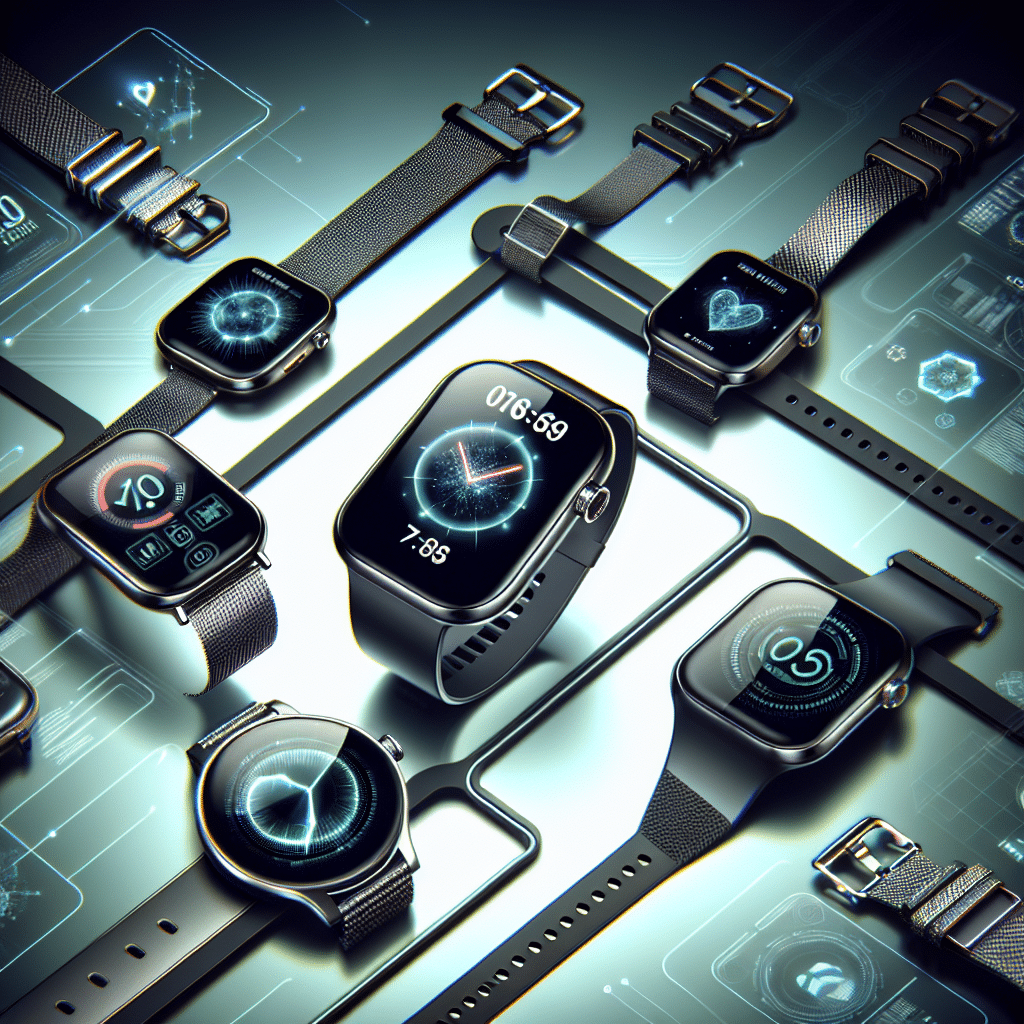Understanding Smartwatches with Blood Oxygen Monitoring
As the demand for wearable technology continues to rise, smartwatches have evolved beyond mere timekeepers into sophisticated health monitoring devices. One of the most significant features of modern smartwatches is blood oxygen monitoring, which provides valuable insights into a user’s overall health. This section delves into the technology behind blood oxygen monitoring, its benefits, and some leading smartwatches equipped with this feature.
What is Blood Oxygen Monitoring?
Blood oxygen monitoring involves measuring the levels of oxygen saturation (SpO2) in the blood. This parameter is crucial because it reflects how effectively oxygen is being transported to vital organs and tissues throughout the body. Normal blood oxygen saturation levels generally range from 95% to 100%. Levels below this threshold may indicate respiratory or circulatory issues, prompting further investigation and possibly leading to medical consultations.
How Does Blood Oxygen Monitoring Work?
Blood oxygen levels are typically measured using a technology called pulse oximetry. Most smartwatches use a similar principle, employing light sensors that emit and measure light wavelengths through the skin. The smartwatch’s sensors usually consist of red and infrared LEDs and a photodetector. Here’s a simplified breakdown of the process:
- Light Emission: The smartwatch emits red and infrared light onto the skin.
- Light Absorption: Oxygenated and deoxygenated blood absorb different amounts of light.
- Data Analysis: Based on how much light passes through the skin, the device calculates the proportional amount of oxygen in the blood and provides the user with a percentage reading.
Benefits of Blood Oxygen Monitoring
-
Health Insights: Monitoring SpO2 levels helps users track their respiratory health, essential for individuals with conditions like asthma, COPD, or sleep apnea. Regular checks can alert users to potential health issues before they become severe.
-
Fitness Tracking: Athletes can utilize blood oxygen monitoring during workouts to gauge endurance and adjust their training intensity accordingly. Better oxygenation often correlates with improved performance.
-
Sleep Quality Monitoring: Monitoring blood oxygen levels during sleep can provide insights into sleep apnea and other sleep-related disorders. Some smartwatches can track variations in oxygen levels throughout the night, helping users understand their sleep quality better.
-
Altitude and Adaptation: For travelers and athletes who engage in high-altitude activities, real-time monitoring of oxygen saturation can help determine acclimatization. It serves as a practical tool for ensuring safety and performance at elevations where oxygen levels are lower.
-
Medical Tracking: For those managing chronic conditions, consistent monitoring of blood oxygen levels can facilitate better health management and more informed discussions with healthcare providers.
Popular Smartwatches Featuring Blood Oxygen Monitoring
With advancements in wearable technology, many brands have integrated blood oxygen monitoring into their smartwatch offerings. Here’s a look at some of the best smartwatches currently available:
1. Apple Watch Series 7 and 8
The Apple Watch Series 7 and 8 come equipped with an advanced SpO2 sensor that allows users to monitor their blood oxygen saturation levels. The device not only provides real-time data but also allows users to take on-demand readings via the Health app.
- Edge: Seamless integration with the Apple Health ecosystem, comprehensive health tracking, and robust third-party app support.
2. Fitbit Sense and Versa 3
Fitbit has been a long-time player in the fitness tracking market, and its newer models include SpO2 monitoring features. The Fitbit Sense, in particular, allows for continuous SpO2 monitoring, which can help users identify trends over time.
- Edge: Comprehensive health metrics, including ECG, stress management features, and an integrated GPS.
3. Samsung Galaxy Watch 4
Samsung’s Galaxy Watch 4 features a SpO2 sensor alongside several other health tracking capabilities, including ECG and body composition analysis. With a user-friendly interface, it is compatible with both Android and iOS devices.
- Edge: Sleek design, rotating bezel for navigation, and robust third-party app support.
4. Garmin Venu 2 and 2S
Garmin is well-known for its focus on fitness, and the Venu 2 models boast an accurate SpO2 monitoring feature, tailored for outdoor enthusiasts and athletes. The watch offers a vivid AMOLED display and robust mapping features.
- Edge: Advanced fitness metrics, including VO2 max, and tailored workout suggestions based on personal data.
5. Amazfit GTR 3
The Amazfit GTR 3 is an affordable option that still offers blood oxygen monitoring alongside various other health metrics. It features an impressive battery life and a sleek design, appealing to budget-conscious consumers.
- Edge: Budget-friendly pricing, long battery life, and extensive fitness tracking features.
Considerations When Choosing a Smartwatch
When selecting a smartwatch with blood oxygen monitoring, several factors should be considered:
-
Accuracy: Not all sensors are created equal. Look for reviews and performance data to ensure the device is accurate and reliable.
-
Battery Life: Integrated sensors can drain battery life faster, so determine how long the device lasts under normal conditions and during workout sessions.
-
Compatibility: Ensure the smartwatch works seamlessly with your smartphone, as features like notifications, app compatibility, and health tracking can vary.
-
User Interface: A watch with a user-friendly interface can make it easier to access and understand health metrics.
-
Price: Smartwatches with advanced features can be expensive. Define your budget and assess which features are essential for your lifestyle.
Conclusion: Harnessing the Power of Health Technology
Smartwatches equipped with blood oxygen monitoring are leading the charge in the wearables market, enabling users to take charge of their health and fitness. By understanding the benefits of these devices, individuals can make informed decisions and prioritize their well-being in their day-to-day lives. As technology continues to advance, these devices promise even richer health insights, enhancing our ability to stay healthy and active in a fast-paced world.
